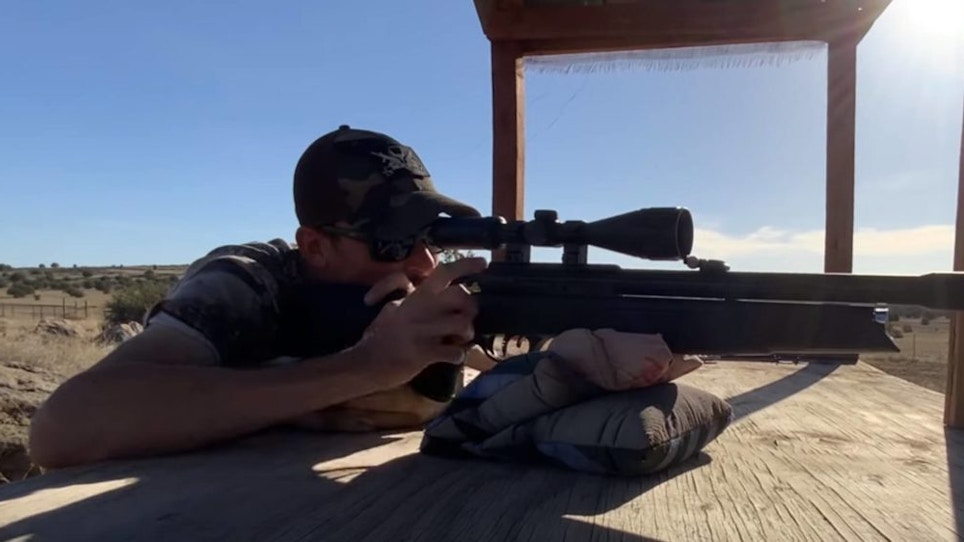Looking for something that will create a new profit center while helping grow the sport? Have you considered modern airguns? No, not Ralphie’s Red Ryder BB gun of “A Christmas Story” fame, but modern, high-powered airguns that have virtually zero recoil and are quiet to shoot, accurate, and powerful enough to take small game and predators, as well as deer and other big-game animals.
The popularity of airgun shooting and hunting is growing slowly but steadily, for many reasons. Chuck Sykes, Director of Wildlife and Freshwater Fisheries at Alabama Department of Conservation and Natural Resources, is a hardcore outdoorsman who loves to hunt with modern airguns. He was the catalyst that made hunting big game with airguns in his state legal. “I brought airgun hunting to Alabama for several reasons,” Sykes said. “It gives seasoned hunters another tool to enjoy afield, but it’s also a natural fit for hunters in semi-urban and urban areas for the lack of sound at the shot. The negligible recoil also helps novice hunters and shooters avoid flinching. And today’s airguns are plenty powerful enough to cleanly take down whitetails and even wild hogs.
“The popularity of airgun hunting is growing slowly in the U.S.,” Sykes continued. “It’s relatively new, and I don’t think it will ever be what archery or traditional firearms hunting is, but it is a great way to provide more opportunity.”
According to the Airgun Sporting Association, big-game hunting with airguns is legal in 24 states — most in the Southeast — and airguns are legal for small-game hunting in every state except Hawaii and Mississippi. Predator hunters can use airguns in 40 of 50 states. You can even hunt upland birds in 31 states. It’s becoming so popular with predator hunters that our sister publication, Predator Xtreme magazine, features a regular airgun hunting column penned by noted airgun hunting authority Jim Chapman, who has taken big game around the world with airguns.
For the uninitiated, there are different types of airguns suitable for serious hunting. At the 2022 SHOT Show, it was evident that airgun manufacturers are hopping on the technological bandwagon, featuring many refinements to existing product lines as well as new designs and technologies. Most of the new airguns on display were of the PCP (pre-charged pneumatic) design — the most popular with serious airgun big-game hunters — though improvements to spring-piston and multi-pump rifles were also showcased. Top manufacturers include AEA, AirArms, AirForce, Air Venturi, Benjamin, Brocock, Crosman, Daystate, FX, Gamo, Hatsan, JTS, and Umarex.
In addition to the rifles themselves, there are opportunities to sell accessories. PCP rifles require charging equipment, which can be a pricey accessory but can offer solid profit margin. For all rifle types there are scopes and mounts, cleaning and maintenance kits, bipods and vertical fore grips, slings, disposable CO2 cartridges, magazines, clips, loaders, targets and traps, cases, and of course, the ammunition itself. Most air rifles suitable as big-game guns are set up to shoot cast lead bullets instead of the traditional Diabolo-style airgun pellet. That’s because cast lead bullets are heavier and have better ballistics and terminal performance compared to Diabolo pellets. There are even some unique accessories like the Combro CB625 Chronograph, a mini airgun chronograph that attaches to the barrel and gives accurate muzzle velocity readings. And how about a suppressor? Yes, they make suppressors for air rifles. The list goes on and on.
You’ll find that serious airgun hunters demand serious rifles, and these rifles are not the relatively inexpensive CO2 replicas, Red Ryder or multi-pump air rifles many of us grew up with. The truth is, a modern high-powered air rifle is more complex from a mechanical perspective than a standard firearm, is made to exacting tolerances, and is built with high-quality materials — and pricing reflects all of that. There are three basic price categories: budget ($500 and under), midrange ($500-$1,000), and high-priced ($1,000 and above.)
Today there are budget-priced rifles from several manufacturers that give new shooters a reasonable entry point into the sport to see if it is something they want to stay with while providing enough power and accuracy to be a viable hunting tool. These rifles also offer customizable platforms. And as you go up the ladder in price, you of course go up the ladder in quality, creating rifles for that elite class of hunter who only wants the very best.
Kind of like regular firearms, no?
For big-game hunting, big-bore airguns are the ticket. An example of a quality big-bore hunting air rifle is the AirForce Texan, a PCP rifle in either .457 or .50 caliber, which generates 750 and 850 ft./lbs. of energy (fpe), respectively. The .457 is a great choice for all-around big game hunting, while the .50 has proven itself even on large African game like kudu, eland and Cape buffalo. Predator hunters and pest controllers are well served with .17, .22, and .257 calibers, depending on conditions, while those looking for calibers that will work well as a combination predator/deer rifle can look to .308 and .357 calibers.
The above is a very, very basic overview of airguns and airgun hunting. I encourage all who want to learn more to visit the Predator Xtreme website, predatorxtreme.com, type Jim Chapman into the search box, and read his columns on the topic. The man truly knows his stuff.






